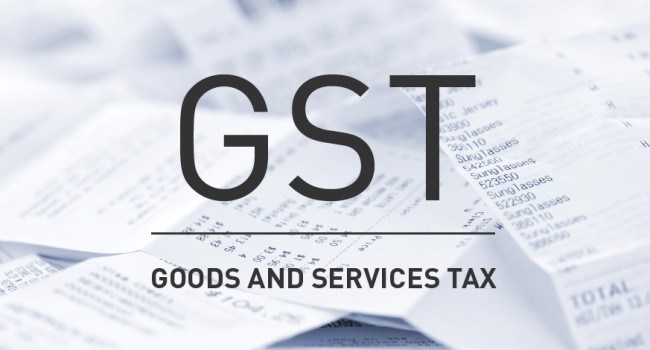Goods and Services Tax (GST) in Singapore 新加坡消费税(GST)
Goods and Services Tax or GST meaning is a broad-based consumption tax levied on the import of goods (collected by Singapore Customs), as well as nearly all supplies of goods and services in Singapore. In other countries, GST is known as the Value-Added Tax or VAT. The current GST rate is 7% in Singapore. 消费税(GST)是对进口商品(由新加坡海关征收)以及新加坡几乎所有商品和服务供应征收的一种基础广泛的税种。在其他国家,GST被称为增值税。目前新加坡的消费税税率为7%。
GST Registration 消费税登记
All Singapore companies must register for GST if their annual taxable revenue is more than S$1 million, or if their current taxable income and annual taxable revenue is expected to be more than S$1 million. The business must register for GST within thirty days from the time it is deemed liable. 如果新加坡公司的年度应税收入超过100万新元,或者当前的应税收入和年度应税收入预计超过100万新元,那么所有新加坡公司都必须注册GST。该企业必须在被视为负有责任之日起30天内注册GST。
You may also choose to voluntarily register for GST. Approval for voluntary registration is at the discretion of the IRAS Comptroller. Once approval is given, you must remain registered for at least two years. 你也可以选择自愿注册GST。自愿登记的批准由IRAS主计长决定。一旦批准,你必须保持注册至少两年。
Charging and Collecting GST 征收消费税
Once you have registered for GST, you must charge GST on your supplies at the prevailing rate. This GST that is charged and collected is known as output tax. Output tax must be paid to IRAS. 一旦你注册了消费税,你就必须按当时的价格向你的供应商收取消费税。这种征收的消费税被称为销项税。必须向IRAS支付销项税。
The GST that you incur on business purchases and expenses (including import of goods) is known as input tax. If your business satisfies the conditions for claiming input tax, you can claim the input tax on your business purchases and expenses. 你在商业采购和费用(包括进口货物)上产生的消费税被称为进项税。如果你的企业符合申报进项税的条件,你可以就你的企业采购和费用申报进项税。
This input tax credit mechanism ensures that only the value added is taxed at each stage of a supply chain. 这种进项税额抵免机制确保在供应链的每个阶段只对增加的价值征税。
Type of Supplies 供应类型
Generally, there is 4 types of supplies in Singapore 一般来说,新加坡有四种供应方式
Standard-Rated Supplies (7% GST) 标准税率供应
Most local sales of goods and services fall under this category. 大多数本地商品和服务的销售都属于这一类。
Zero-Rated Supplies (0% GST) 零税率供应
– Exporting of goods 出口货物
– providing international services 提供国际服务
Exempt Supplies (GST is not applicable) 豁免供应(GST不适用)
– Sale and rental of unfurnished residential property 出售和出租无家具的住宅物业
– Importation and local supply of investment precious metals 投资贵金属的进口和本地供应
– Financial services 金融服务
Out-of-Scope Supplies (GST is not applicable) 超出范围供应(GST不适用)
– Sale where goods are delivered from overseas to another place overseas 货物由海外运往另一个地方的销售
– Private transactions 私人交易
Time of Supply Rules Effective 1 Jan 2011 《供货时间规则》自2011年1月1日起生效
With effect from 1 Jan 2011, For most transactions, output tax will be accounted for based on the earlier of the following: 从2011年1月1日起,对于大多数交易,销项税将按照以下较早的一种方式入账:
- When an invoice is issued 开具发票时
- When payment is received 当收到付款时
Tax Invoice 税务发票
A tax invoice is the main document for supporting an input tax claim.
You must keep the tax invoices issued to your customers, and those given to you by your suppliers, for at least five years. You do not need to submit these tax invoices with your GST returns. 税务发票是支持进项税抵扣的主要文件。你必须保留给你的客户和你的供应商给你的税务发票至少五年。您不需要将这些税务发票与您的GST申报表一起提交。
A tax invoice must be issued when your customer is GST registered. Your customer needs to keep this tax invoice as a supporting document to claim input tax on his standard-rated purchases. In general, a tax invoice should be issued within 30 days from the time of supply. 当您的顾客注册GST时,必须开具税务发票。您的顾客需要保留这张税务发票作为支持文件,以申报其购买的标准商品的进项税。一般情况下,税务发票应在开具之日起30天内开具。
A tax invoice need not be issued for zero-rated supplies, exempt supplies and deemed supplies or to a non-GST registered customer. 零税率供应品、免税供应品和视同供应品或非GST注册客户无需开具税务发票。
Your tax invoice must also provide details on exempt, zero-rated, or other supplies, if applicable. The gross amount payable for each type of supply must also be separately stated. 您的税务发票还必须提供免税,零税率,或其它供应(如适用)。每种供应的应付总额也必须单独列明。

